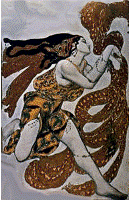

|
|
|||||||||||||||||||||||||||||||||||||||||||||||||||
|
| |||||||||||||||||||||||||||||||||||||||||||||||||||
 policies—copyrightETAF and DCI respect and observe U.S. and International copyright law. They strive to make the so-called Fair Use provisions of copyright law apply to material published at Electricka's web site.Fair Use, as used in connection with copy rights, denotes the rights of the public to use copyrighted materials while at the same time protecting the rights of those who possess the rights to copy.
Especially relevant to copyright questions at Electricka's web site are the following subjects:
Especially helpful to understanding Fair Use at a web site are summaries of Fair Use cases that involve text, art work and audio visual materials, Internet, music, and parody. One of the best ways to understand the principle of Fair Use and how it applies to these categories of the arts is to see examples of cases decided by the courts.
protect yourself from plagiarismDCI and ETAF want you to feel comfortable and safe when you publish materials at Electricka's web site. Here is some important information, friendly advice, and a few suggestions that may help. DCI ETAF and DCI cannot and do not assume any responsibility for (or take any measures to) protect proprietary publication rights for materials that visitors submit for publication. Accordingly, you must take all necessary steps to protect these rights if you are concerned about protecting your rights or those of others.
Most publications protection issues are matters of common sense. Here are a few simple steps you can take to help protect yourself and others from accidental or deliberate infringement of your publications rights by visitors to this web site. No method is foolproof, but here are some sensible and practical measures available to you: Add appropriate symbols and statements to your work
Proprietary symbols and statements can be added to one or more of the following:
employ Software file protection featuresUse file preparation software and take options that prevent your submitted files from being printed, distributed, copied, or otherwise misused in whole or in part after they are published. If properly employed, these options can protect you whether or not your files are visible on a computer screen or whether or not they can be accessed by clicking a link.
creative commons licenses
More at this web site about visitor submissionsSee these additional ETAF and DCI policies pertaining to publication rights and obligations: explore copyright law furtherFor an excellent rundown and overview on the subject of copyright law, we suggest a visit to SULAIR, the Copyright And Fair Use web site of Stanford University Libraries:
recourseWithin reason, ETAF and Electricka do their best to apply the principles and practices of copyright protection as described above to the material published at this web site. However, questions can sometimes arise because:
Any violation of your publication rights on ETAF's part is purely an accident. If you feel that your personal or corporate copy rights have been violated by material published at this web site, please contact us. We'll do out best to remedy the situation.
ETAF And DCIThis web site is published and copyrighted by Exploring The Arts Foundation (ETAF), a division of Decision Consulting, Inc. All rights reserved. This web site is copyrighted under the laws of the United States and under International laws. No portion may be reproduced in any form by any means, including information storage and retrieval systems, without permission in writing from ETAF or Decision Consulting, Inc., except: 1) private parties may print specific pages from the document for personal use, and 2) a reviewer may quote brief passages in a review. All passages produced by a reviewer must include the above copyright statement.
ETAF recommendsStanford Law Professor Lawrence Lessig has written a book on the subject of copyright law entitled, Free Culture. We paraphrase the author's statement of the book's thesis as follows:
Search this web site with Electricka's Search Tool:
tap or click here
Electricka's Theme Products
Shop At Cafe Press
This web site and
its contents are copyrighted by
Decision Consulting Incorporated (DCI).
All rights reserved. |
| ||||||||||||||||||||||||||||||||||||||||||||||||||